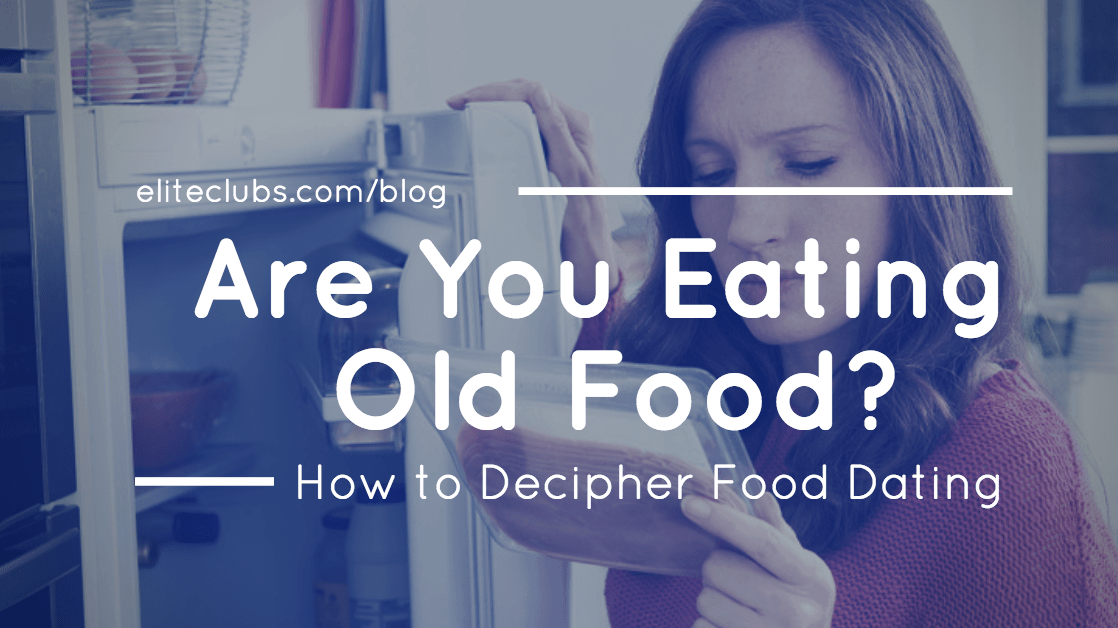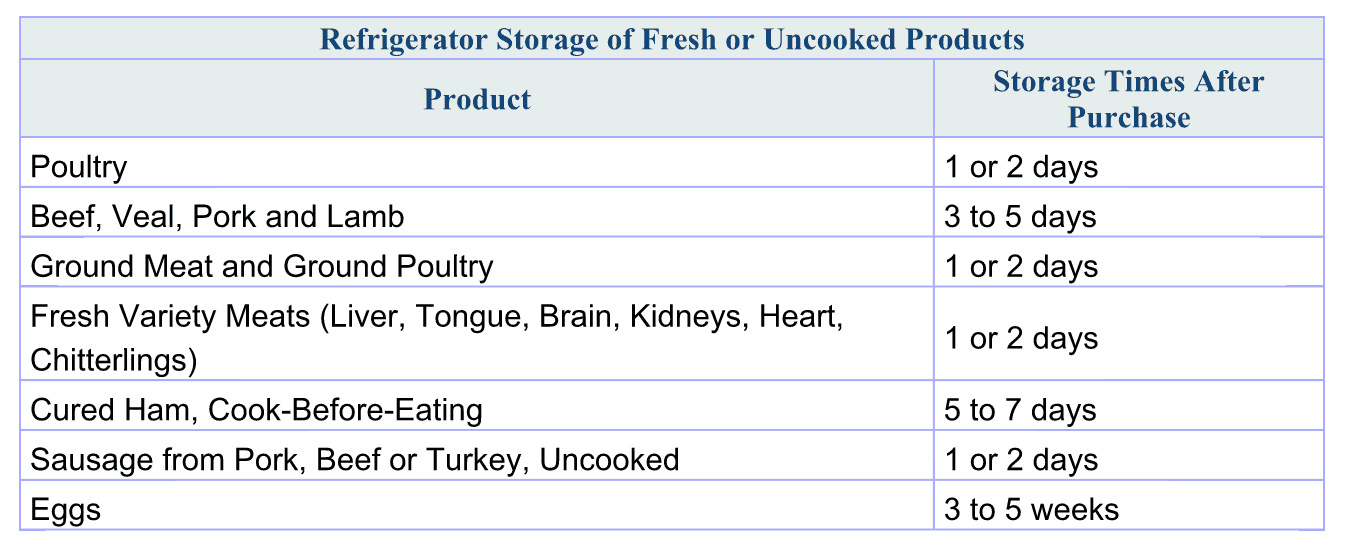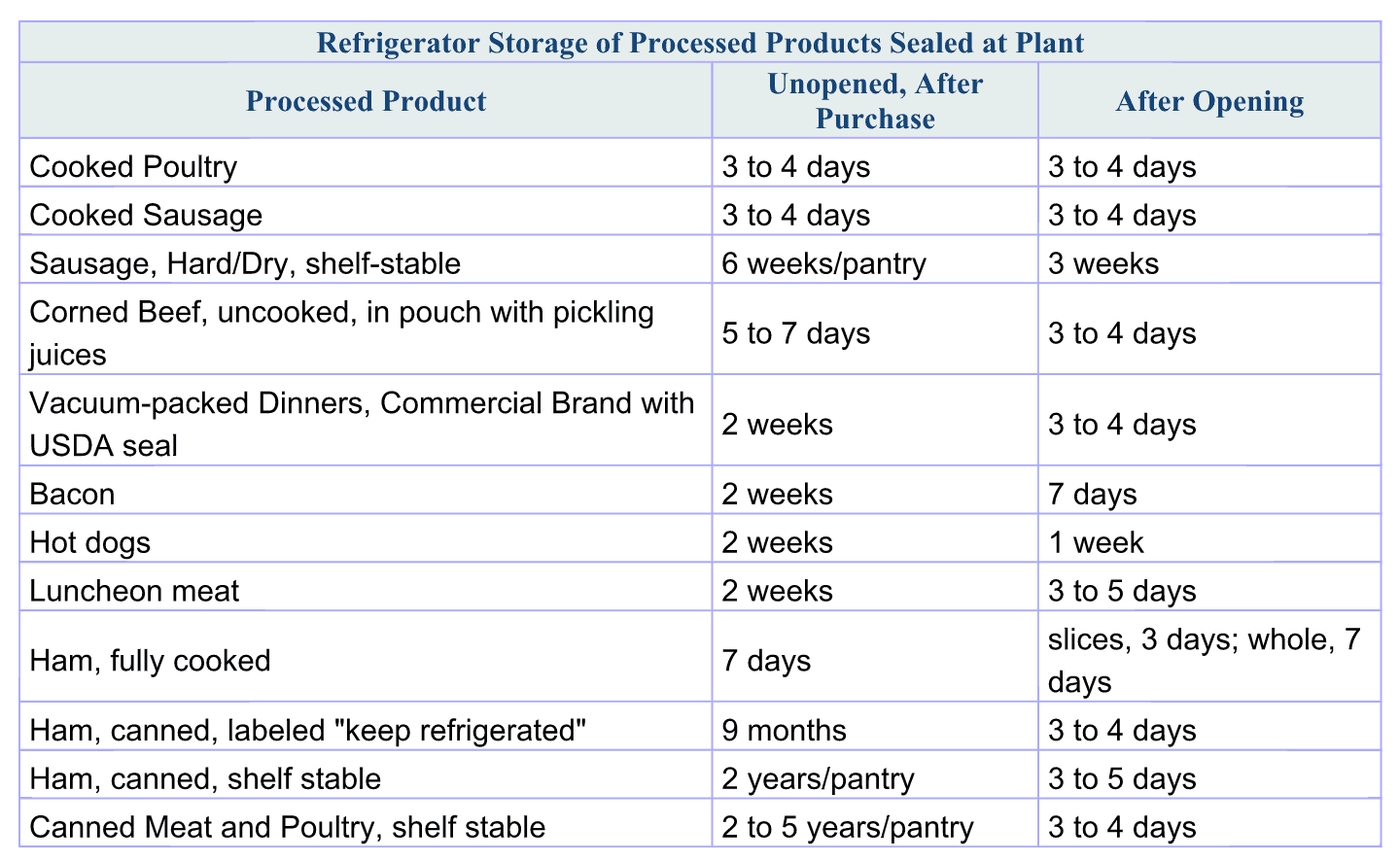
Are dates required on food products? Does it mean the product will be unsafe to use after that date? Here is some of the background information regarding these questions on food dating that we are all faced with on a regular basis.
“Open dating” on a food product is an actual or real date on a product’s package to help the store determine how long to display the product for sale.
It also helps the buyer to know the time limit to purchase or use the product at its best quality. But it is not a safety date. After the date passes, while it may not be the freshest quality, refrigerated products should be safe if handled properly and kept at 40 degrees F or below for the recommended storage times.
However, if the product has a “use by” date listed, FOLLOW THAT DATE.
If products have a “sell by” date or no date, COOK OR FREEZE the product as soon as you can.
Some shoppers will go by the dates on food purchasing guides—provided below.
For the Federal government, the only guides given are for baby formula.
Usually there will be a calendar date listed and then a statement of use, such as “use by”.
Throughout the United States, there is little real accepted policy that governs food dating.
Food dating policies do exist in approximately 20 states, and in the rest of the country there is open dating or no food is dated.
What types of foods will have dating?
This dating occurs on all perishable foods, such as meat, poultry, eggs, and dairy products. So, what do you do if the food product looks, smells, or tastes “okay”?
- All perishable meats and poultry should be followed by the dates carefully and cooked as quickly as possible.
- For dairy, which is extremely perishable, it will be very apparent that the food is becoming “old”. Milk, for example, will have an off taste or be sour. (You will know when it has gone bad!)
- As far as eggs are concerned, just follow the date on the carton and always keep store bought eggs in the refrigerator.
Refrigerator Home Storage (at 40 °F [4.4 ºC] or below) of Processed Products Sealed at Plant
- If product has a “use-by” date, follow that date.
- If product has a “sell-by” or no date, cook or freeze the product by the times on the following chart.
Lastly, if the food has been ‘mishandled”, food borne bacteria can grow, and if present, foodborne illness can occur.
Unfortunately, you may not be aware of it. And, in any case, just be aware of the look, taste, and texture of food you are served away from home and outdoors.
Luckily, canned foods are safe indefinitely. So, what does it mean when a can carries a code? This code is merely for tracking purposes and is used only for recalls if needed.
Most often, you will have nothing to worry about. Food handling practices at home will also help, as in, defrosting meats in the microwave or in the refrigerator rather than sitting on the counter all day. If you have any questions, call the store you purchased the food from, and/or follow the charts above.
One of the most remarkable statements made by Julia Childs on her last visit to Milwaukee twenty or more years ago, was that she was “very envious” of the safety of the food available everywhere in the United States. Something for us to keep in mind!
Written by Rita Larsen, RDN, CD; Elite Sports Clubs Nutrition Educator & Diet Counselor
Rita is certified in Positive Psychology, University of Penn; has a BS in Dietetics from Kansas State University; and an Internship and Masters at the Indiana University Medical Center.
Schedule a Nutrition Consultation

